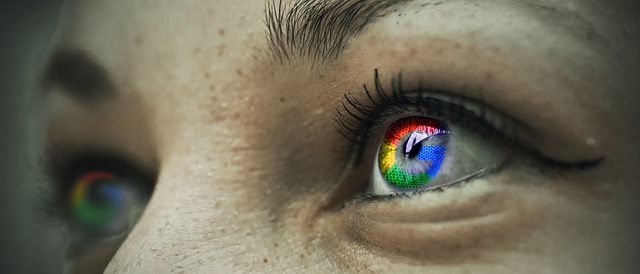The digital age has made it more important than ever to create innovative products, but it can be difficult to do so without taking user experience (UX) into account. If UX isn’t a priority, how can product creators ensure successful development? What are the essential steps to creating a product with optimal UX? How can developers ensure their product caters to the User’s needs?
Studies have found that focusing on UX helps to ensure a positive user experience, which in turn leads to higher customer satisfaction, loyalty, and represents an opportunity for a competitive advantage. It is essential that development teams utilize a holistic approach to UX, gathering feedback, and diligently adapting their product as needed to ensure it meets the user’s needs and expectations. For a product to be successful, designers need to prioritize user experience and ensure they have taken into account key elements such as usability, design, branding, and customer support.
In this article, you will learn the importance of understanding user needs and expectations regarding a product. You will gain an understanding of UX design principles, and how to ensure that these are translated into a successful product. Strategies will be outlined that detail how to make UX integral to the product development process. And finally, various techniques and approaches will be discussed which can help testers ensure that the final product meets user requirements.
This article will help product liasons, managers, developers, and testers gain a better understanding of the importance of UX in product development, and the strategies available to ensure that it becomes a top priority.

Definitions
User Experience (UX) is an essential element for creating a digital product. UX is the overall experience a person has when interacting with a product, website, or other service. It is the way a user interacts with, and responds to, the design of an interface. It takes into consideration all aspects of the user’s experience, including usability, accessibility, design, and emotions.
Usability refers to the extent to which a product can be used easily and efficiently. Ensuring high usability means making sure a product works as it is intended to, and that the user can navigate the interface with minimal effort. A usability-focused approach should involve user-centered design to prioritize users’ needs and wants.
Accessibility covers the extent to which a product can be used by people with disabilities. A product or service must be designed in a way that makes them accessible to everyone. This includes taking into account any features such as screen reader software or other assistive technology which users may require.
Design is the visual elements of a product, such as color schemes, images, and typography. It’s important to ensure that the design elements used are both aesthetically pleasing and effective to communicate the message of the product.
Finally, emotions are an important consideration when delivering a product. It should evoke the right feelings and emotions in the user. Attention to detail, such as styling and subtle animations, can contribute to the overall user experience.
UX is a key element of product design and should be taken into consideration throughout the development process. It encompasses all aspects of the end-user experience, including usability, accessibility, design, and emotion. It is an essential part of creating an effective and enjoyable product.
The Necessity of UX in Product Creation
The Role of User Experience in Product Creation
User experience (UX) plays a critical role in the success of any product that a company designs and releases to its customers. UX focuses on making sure that users have an enjoyable interaction with products that fit their needs and help them achieve their goals. By understanding customer needs and then designing a product that meets them, companies can create a successful product that users will love and be willing to pay for.
UX designers look at the way that users interact with a product, from the initial exposure to the actual usage of the product, to ensure that the user experience is a positive one. They focus on creating intuitive designs that minimize user frustration and make a product as easy to use as possible. To achieve this aim, UX designers use research techniques such as interviews, surveys, and user testing to learn more about their users and how they want to use the product. This knowledge helps guide the design process, resulting in better products that deliver a better experience.
In addition to understanding user needs, UX designers also ensure that products are accessible, inclusive, and responsive. Accessibility means that anyone should be able to use a product, regardless of special needs or disabilities. Inclusivity helps ensure that a product provides a positive experience for all users, regardless of culture, gender, or background. Responsiveness ensures that the experience is optimized for different devices and environments.
UX Design Tactics
UX design involves more than just understanding user needs and creating an intuitive interface. UX designers must also use a variety of tactics to deliver the best experience possible. Here are some of the tactics they use:
- Prioritize user needs over business needs.
- Minimize the time it takes to navigate from page to page.
- Incorporate visuals into the design to enhance the experience.
- Include help systems such as tips or resource pages to help users find what they need.
- Include feedback loops to ensure that user needs and preferences are taken into account.
With these tactics in mind, UX designers create a product based on the user needs they have identified. They use the tactics to create an enjoyable experience that helps users accomplish their goals. By creating a product that meets user needs, companies can maximize their potential for success.
Impact of UX on Product Performance
What is UX?
User Experience (UX) is the experience of a user when interacting with a product, system, or service to satisfy a specific goal. This experience is created from the combination of physical, cognitive, and emotional responses that occur while a user navigates, manipulates, and completes their desired outcomes. It is created from the interactions between a person’s natural and artificial systems, such as hardware, software, architecture, and infrastructure. UX Designers have to consider different aspects of an interface, such as the color, font, layout, and navigation. All these components combined build a visual representation of the user experience.
How UX Influences Product Performance
UX is important for creating a product in order to improve its performance. A product that is poorly designed will be difficult and clunky to use, leading to lower levels of customer satisfaction. The user experience should be integrated into the early steps of product design and development, since it has a direct impact on a product’s success. Good UX design will enable customers to have a pleasant and efficient experience, which will, in turn, boost the product’s reputation. UX strategy should take into account the user’s needs and requirements, as well as the technical aspects of the system. By using research and testing methods, UX designers can identify and address usability issues and help create an intuitive and enjoyable product.
A successful UX design leads to improved usage and adoption of a product, as users feel more comfortable with the product’s design. It can also influence user loyalty and retention, as users will return to the product if it is easy and enjoyable to use. Furthermore, UX design can also enhance the credibility of a product, as customers trust a product that is well designed and easy to use. Finally, UX design can have a significant effect on the profitability of a product, as it ensures that customers effectively use features in the product which, in turn, increases revenue.
In conclusion, UX has a significant influence on product performance. A well-designed product will create a positive user experience, which will lead to increased usage, customer loyalty and profitability. UX should be integrated into product design and development in order to create an enjoyable and efficient product that meets the customer’s needs and requirements.
The Role of Synthesis in UX Design
Creating a successful product requires a thoughtful and strategic approach to User Experience (UX) design. UX is the process of optimizing an individual’s interaction and overall satisfaction levels with a product. This includes everything from a user’s initial inquiry with a product, their relating interactions with it, as well as their overall satisfaction with the product, taking into account usefulness, usability and overall pleasure. Therefore, if any part of the UX process is ignored or overlooked, a product’s success can be hindered.
Synthesis in UX Design
Synthesis, the act of bringing together components from multiple areas to form an unified, coherent whole, is a crucial element of UX design. Before a product can even be created, it must undergo synthesis of research and data. Synthesizing research is an essential step as it ensures that all existing data related to the product has been taken into consideration. This includes previous studies of related products, competitor products, user expectations and feedback, feature trends, data from analytics and even the product’s projected strategies. Data synthesis is therefore an imperative phase of the UX design process and should be conducted early on in order to understand the product’s environment and purpose.
Integrating Design with Synthesis
The next phase of UX design involves integrating synthesis with the product’s design features. This can include anything from developing product features and visuals to creating user-friendly interfaces. One must think about how to create a simplicity of use and how to optimize the user experience. Additionally, various low-fidelity prototypes can be experimented with in order to understand the product’s effectiveness. In instances that require more complex features, high-fidelity prototypes should be constructed, as these typically provide a more accurate account of how the product will function in its final form.
Furthermore, designers should ensure that the product’s user interaction follows the same standards of good UX design. This includes the use of responsive layouts, optimized navigation, and information architecture. Likewise, ensuring consistent designs across platforms, be it on Mobile, Desktop or Tablet, can help to further increase user satisfaction.
In conclusion, synthesis plays an important role in UX design, as it acts as a transformer between the research phase and the design phase. Designers should use synthesis to understand how the product should look and function, and to inform decisions related to the product’s design features. Furthermore, the user must remain at the heart of the design process, as understanding what factors are important to the user allows for greater intuitiveness and understanding of the respective product’s purpose. Thus, synthesis plays a key role in the product creation process, as it allows designers to learn from the research they have conducted and to create a complete and cohesive product.
Conclusion
Conclusion: UX (User Experience) has a major significance when it comes to developing a product. A great user experience goes a long way in not just attracting but also keeping users engaged with a product or service. It is a complex layer that needs to be crafted thoughtfully, and the result should not only be delightful for its users but also have a deep learning curve, leading to even more attractive experiences over time.
Thought-provoking question: How do you measure user experience effectively?
UX is an ever-evolving approach and standards are consistently shifting. Make sure to follow our blog for new releases and updates on how to maintain a high level of user experience quality. We are dedicated to helping you create a user experience that is not only enjoyable for users but also helps to drive engagement and loyalty.
FAQ section:
Q: What is UX (User Experience)?
A: UX can be defined as the entire journey of a user when engaging with a product or service. It includes the feelings, thoughts, and animalistic responses that a user goes through as they interact with a product. Quality UX design is intended to create an experience that is intuitive, engaging and has a lasting impact.
Q: What is the purpose of UX?
A: UX has a few major purposes. It should make the user experience as enjoyable and intuitive as possible, reduce processing time and increase the efficiency of tasks, and drive engagement and loyalty.
Q: Who creates UX?
A: UX design is usually done by product designer, graphic designers, user researcher, and UX specialist. They should all be working together with other departments in the organization to create the best possible user experience.
Q: How does UX add to customer satisfaction?
A: Quality UX design ensures that the user experience is top notch. It should implement clean designs, fast loading times, entertaining visual elements, intuitive navigation and feedback loops to ensure the user knows how their actions impact the product.
Q: What are the software used for UX design?
A: Popular software applications used for UX design include Photoshop, Sketch, Adobe Xd, Axure RP, Invision, and many more. Each of these tools has their own distinct qualities and features, which make them ideal for creating high quality UX designs.



